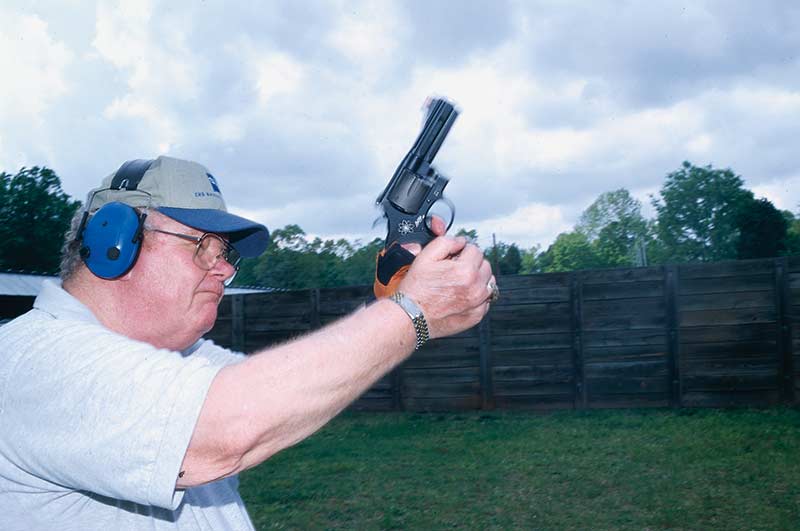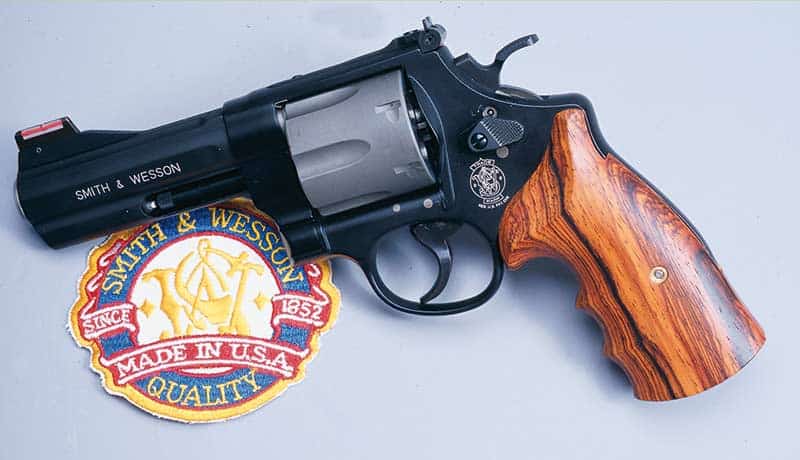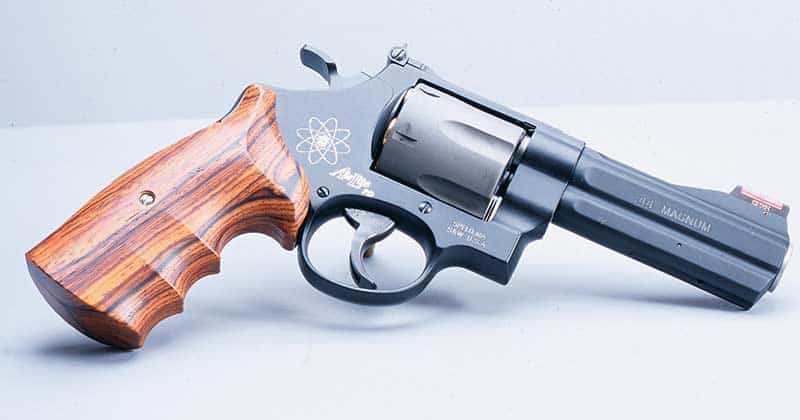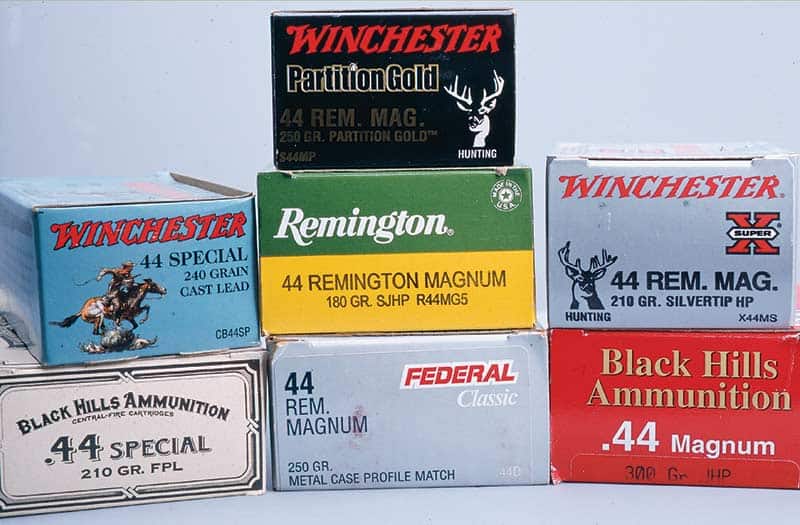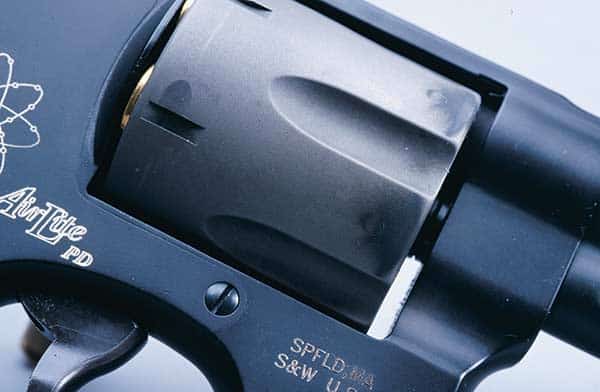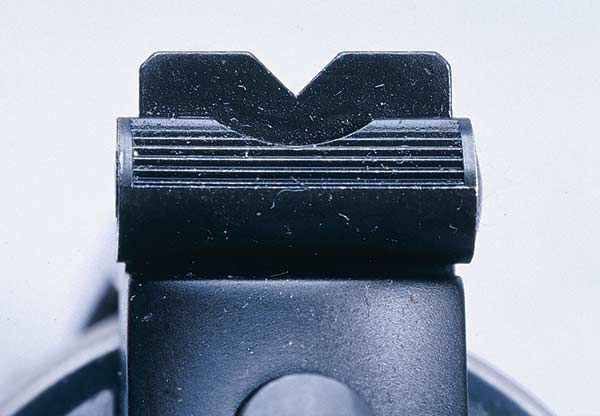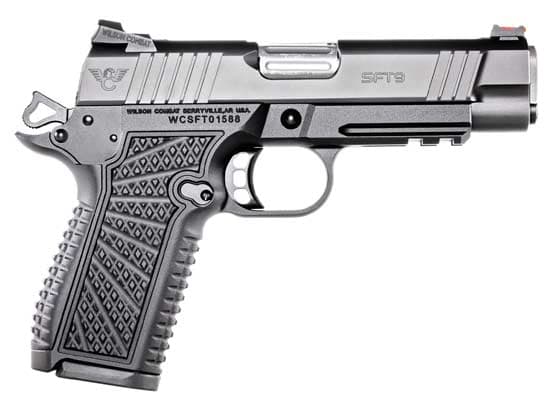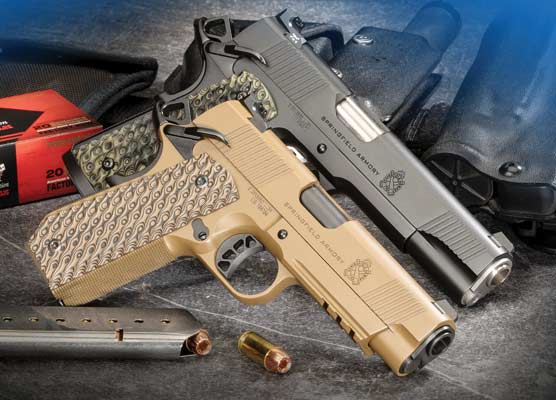Too Much Of A Good Thing?
Many Shooters Seek More Power And Less Weight,
But Is S&W's Model 329PD Approaching The Limit?
When you see a Smith & Wesson revolver with the numbers 29 in the nomenclature it can only be one thing. It shoots the cartridge Eastwood made famous. While the .44 Magnum can no longer claim to be the world’s most powerful handgun, it remains the standard against which other magnums and wannabes are measured.
S&W has been making .44 Magnum handguns continuously since 1956 and for most of that time nothing changed very much until the Model 629 stainless steel version came along — eventually to replace blue or nickel as a finish choice. There have been some mechanical changes that are common to all S&W revolvers. Each time they make an engineering change a “dash number” is stamped right behind the model number. We’re up to -6 right now.
There was also a major redesign of the Model 29’s cylinder locking system a few years ago to prevent it from opening or spinning out of sequence under recoil. Loads were getting hotter and bullets heavier, and the recoil kinda’ shook things up in there. Those issues are resolved. The last change was the inclusion of a little key lock just above the cylinder release, which allows the action to be locked completely.
Consumer Imperative
There are two contests going on at the urging of shooter/consumers. Power and weight are valued or cursed depending on the individual’s indoctrination. Some believe you can’t have too much power while others want to shave every micro-gram they can from the weight of their blaster. S&W has offered alloy frames for a long time, but they have radically reduced weight lately.
They began with Titanium and came up with a 12-ounce “J” frame revolver — the Model 342 (plus some others) that were approved for use with +P .38 Special ammo. This was a pretty big deal because S&W had always advised against that with aluminum alloy frame guns. But they cranked it up another notch when they added Scandium to the alloy mix and now we’ve got a 12-ounce gun — the Model 340 — that can handle .357 Magnum ammo.
These were no small accomplishments and required a new way of making the barrel so it would not wander off the vertical under recoil. The solution was a separate stainless steel “barrelette” that is covered, and held on, by an aluminum shroud. The shroud was aligned with the frame with a key/slot arrangement that made it impossible for the shroud to rotate and the torque helped keep everything snugged up.
This really is a big deal engineering wise, and many of us thought that they’d gone as far as they could go in weight reduction. And of course you know we were wrong. I guess it was inevitable for S&W to apply the new construction with Scandium/Titanium to the big bore and bring us the 26-ounce Model 329PD. The PD designation is applied to guns that have a black anodized finish as opposed to natural aluminum.
Light Weight And Power?
So here we are: there is a sizeable segment of the handgun market that believes in carrying the lightest thing possible. Of course there’s a downside to that because as you reduce weight you automatically increase recoil. With the .44 Magnum that change is exponential.
My personal view is that weight really isn’t the all-consuming issue that some folks make of it, but will also acknowledge that there is a place for a gun like this. It is some-thing you carry with the fervent hope you don’t have to shoot it. To me the .44 Magnum is far more gun than you need for personal or home defense, but it could be great for hikers or hunters who are already encumbered with heavy gear and want something “just in case.”
Writers seem to talk a lot about handguns for encounters with dangerous game, especially bears, and a lot of them want power or more power. Okay, that’s one approach, but it overlooks the myth of the one shot stop. When we speak of handguns and shooting living objects, be they people or bears, there is much to be said for rapid followup shots.
It’s rarely wise to wait and see if the first shot was enough. Far better to get some more on the way and one would need to train long and hard to master any .44 Magnum well enough for that. It can be done to be sure, but it wouldn’t be a good idea to simply count on the power of the .44 to over-come deficits of marksmanship.
Defining Moment
The first time I shot the Model 329 was not a joyous experience. It was with full charge 240-grain Magnum ammunition and the gun wore wood grips that left the metal backstrap exposed. Simply put, it hurt. The gun that came later from S&W is furnished with two sets of grips — S&W insists on calling them “stocks.” One is a finger groove style of lovely wood from Kim Ahrends. The other is a rubber Hogue Monogrip, which helps with recoil but still leaves the backstrap exposed.
My first act was to purchase a set of Pachmayr Decelerator grips that cover the backstrap and then dig out the Uncle Mike’s glove. Those accommodations were highly beneficial and strongly recommended if you are going to shoot the 329PD very much.
As with their other ultra-lightweight revolvers, S&W cautions that the heavy recoil could result in a bullet being pulled forward in the cartridge and in the worst case binding the cylinder. Their common sense advice is to load the cylinder and shoot four or five rounds. Inspect the unfired cartridges and if the bullet is exactly where it was before all is well.
I don’t really think of myself as particularly recoil shy but that first experience is still indelibly inscribed in my long term memory. So when I began to work with the 329PD I shot a lot of .44 Special cowboy loads and worked up through hotter .44 Specials and them some magnum handloads at the starting load end of the scale. From there it was 180-, 210-, 240-, 250- and 300-grain bullet weights in factory ammo.
Everything in .44 Special was easily manageable and the cowboy loads were plain fun. There was a substantial recoil increase with magnum handloads and even more with factory ammo. The lighter bullet loads seemed most obnoxious, maybe because of greater muzzle blast, but as I shot the various loads shown in the table the Black Hills 300-grain JHP was almost pleasant.
This, obviously, is contrary to expectations. When I ran them through the chronograph the answer was obvious. Instead of the 1,200 or so fps listed in most factory specifications, it was doing only a little over 1,000 fps from the 4-inch barrel of the 329PD.
A word about factory ballistics data: It is almost impossible to compare apples with apples when we chronograph a real gun for comparison with published velocities. For example with the .44 Magnum we can find factory data generated from 5-, 61⁄2- and 71⁄2-inch barrels. The standard test barrels are vented to simulate the effect of the barrel/cylinder gap, and since we don’t have very many real world guns with those barrel lengths we need to be careful in our judgements.
The Mysterious Dot
Speaking of barrel/cylinder gaps you’ll see that the 329PD has a steel blast shield directly above the gap to protect the top strap of the frame. We know that gas escapes there, but when you think about loads that generate pressures of 36,000 psi (40,000 CUP) the jet effect should be obvious, but it also produced a sign I had never seen before. After the gun had been shot awhile you could clearly see a round mark about .1 inch in diameter located dead center on top of each charge hole, about 1/4 inch back from the front of the cylinder.
A moment of head-scratching led to the discovery that the mark was directly under-neath the screw that holds the rear sight on. The screw doesn’t quite fit flush with the top strap and a friend at S&W explained that it serves to focus the blast on that one spot. It does no harm — and doesn’t indicate that anything is wrong. It’s just gonna be there. Which brings us to cleaning.
S&W warns against the use of any abrasive cleaning method on the titanium cylinder. That is especially true of the face of the cylinder as this could damage a special protective surface and lead to premature wear. S&W recommends that only conventional gun cleaning solvents be used. A bronze brush may be used, but no steel wool or stainless steel brushes. I’ve tried several solvents like Hoppes No. 9 or Shooters Choice, and while they remove carbon fouling they do not remove the little round spot or the darkening on the face of the cylinder. It’s a fact of life for this gun and the price you pay for lightweight magnums. Live with i
Sights To Be Seen
S&W has done some cool stuff mechanically to make this gun and they added a nice touch in the form of the sights. The front sight is from Hi Viz with a florescent red insert. This takes the old red ramp S&W sight to new heights. It positively demands your attention. The rear sight is S&W’s normal adjustable but with a leaf having a shallow “V” shape commonly called an express sight.
The combination works — and fast. I didn’t have any trouble with some precision shooting either once I figured out a sight alignment that worked for me. You really have two choices here, and either one will work. You can bury the red front sight in the rear “V” much as we’d do with a normal Patridge sight, or you can have a red half-moon above the rear notch. This seems a bit faster but you can adjust the rear to accommodate either view.
The Model 329 was tested for accuracy in the Ransom Rest with no trouble. It had been speculated that recoil would be too much for the rest but that wasn’t at all true. As you can see from the table, best accuracy was obtained with the heavier bullets. When inspecting the velocity figures, remember again we’re dealing with a 4-inch barrel, not a laboratory test barrel of 6 1⁄2 or 7 1⁄2 inches.
I would be less than honest if I didn’t tell you I was intimidated by this gun at first. And why not? Recoil and muzzle blast are ferocious. But once we learn that it only hurts a little and get properly geared up with grips and gloves, I found myself getting along with it quite nicely. Everyone will have to decide his own wants and needs but if those include a gun that is easily carried but has the wallop of the .44 Magnum. This is it. MSRP of the 329PD is $900.
